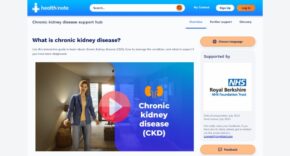
As the NHS struggles to manage backlogs, industry leaders and healthcare experts discuss benefits of expanding access to medical devices into ISTCs to increase combined glaucoma/cataract procedures.
- iStent Inject was recommended for ground-breaking pilot programmes across Independent Treatment Centres in England
- The report ‘The Silent Theft of Sight’ calls for improved access to ophthalmic medical technologies across both NHS hospitals and independent treatment centres – ending the postcode lottery
- Ophthalmology currently represents 10% of the NHS backlog, with 628,502 people waiting for appointments
Today sees the launch of The Silent Theft of Sight, a report looking into innovative solutions for the current ophthalmologic backlog in the NHS. In February 2023, ophthalmologic medical technology and pharmaceutical company Glaukos Corporation invited industry leaders, healthcare professionals and political stakeholders to a Glaucoma Parliamentary Roundtable to discuss how disparities in access to medical technology affect the quality of patient care.
The discussion, set out in their premier report, The Silent Theft of Sight, outlines key recommendations for reducing ophthalmic backlogs throughout the UK healthcare systems and calls for the creation of a pilot programme to demonstrate the feasibility of new glaucoma technologies in independent sector treatment centres (ISTCs) bringing their treatment options in line with in-house NHS provision.
NHS backlogs are significantly impacting available care. According to a recent report from the Association of Optometrists, in partnership with the Macular Society, one in 11 patients on a NHS waiting list are waiting for ophthalmology appointments and, since 2019, hundreds of people have lost their sight as a result of delayed appointments.
At present, the NHS takes care of glaucoma treatment, while the majority of cataract surgery is outsourced to ISTCs, which have much shorter waiting times. However, while patients in three-quarters of NHS hospitals have access to certain treatments such as the iStent Inject – a revolutionary treatment for glaucoma, patients at ISTCs do not, meaning that the majority of the cataract patients in England are unable to benefit from this technology and face long waiting lists and the reality of more than one operation, if they need glaucoma surgery at a later date.
While ISTCs have been very successful at quickly attending to routine operations, such as cataracts, when certain patients require more complex care, they are referred to the NHS – however, the more complex cases are more expensive, which puts additional strain on the NHS. Therefore, the Royal College of Ophthalmologists are currently calling for greater collaboration between ISTCs and the NHS, following a workforce survey of hospital ophthalmology units, which displayed overwhelmingly negative attitudes towards ISTCs.
Although hospital trusts outsource routine procedures to ISTCs, there is no consistent pathway for NHS-approved medical devices to be implemented into ISTCs which would allow them to take on more technical cases, such as glaucoma.
There are currently over two million people in the UK living with sight loss, more than half of which is avoidable. With over 480,000 people live with Glaucoma in the UK, among white Europeans, around 1 in 50 people over 40 years of age and 1 in 10 people over 75 years of age have chronic open-angle glaucoma. Sight loss costs the UK economy £25.2 billion a year, and it is estimated that this cost will rise to £29.9 billion a year by 2030 and £33.5 billion a year by 2050. Eighty-four percent of these economic costs lie outside the health and social care system, mainly due to lost productivity through the barriers people with sight loss experience in the workplace and the need for family and friends to provide informal care.
The main treatment for glaucoma is prescription eye drops. However, the difficulty of self-administration, requiring a certain level of consistent timing and organisation, is something that patients often find too complicated – this results in critically low adherence levels, which in turn further disrupts a patient’s lifestyle as their sight continually declines.
Whilst glaucoma and cataracts are not typically related, the risk factors for both eye conditions can worsen or develop with age. Cataract surgery is the most common elective procedure performed in the NHS, and many patients will also suffer from glaucoma.
iStent Inject is the smallest implantable device in the human body. It improves drainage and lowers eye pressure, which has been proven to reduce the risk of future sight loss and prevent the need for further invasive glaucoma treatment. Over one million iStent implants have been inserted worldwide, with 25,000 in England specifically – with a decade of real-world evidence, the device can be seamlessly implemented into ISTCs’ treatment procedures.
An RCT shows iStent inject combined with cataract surgery is more effective than cataract surgery alone and a meta analysis shows iStent inject is effective even as a standalone procedure. Only 1% of 186 eyes in an RCT required secondary intervention after iStent inject implantation during 3 years of follow up, only 2.6% of 778 eyes required secondary surgery in a meta analysis and in a real world study with 5 year follow up only 4% of 125 eyes required secondary surgery, despite many already having moderate to advanced glaucoma at the time of surgery.
“Patients are faced with a dilemma – do they get referred to an independent treatment centre and have just the cataract surgery in a few weeks, and continue to struggle with eye drops? Or do they wait months and months to have a combined procedure in the NHS to address both conditions at the same time, but risk deterioration during the wait?” said Rob Petrarca, Independent Consultant and ophthalmologist at the The Royal College of Ophthalmologists (RCO). “As the NHS struggles to manage backlogs, there is a clear unfair inequality in healthcare provision for patients.”
Imran Masood, ophthalmologist at the Birmingham and Midland Eye Centre added “When introducing a device to the independent sector, you need something safe and effective – and that is why the iStent Inject is the best option for a pilot.” Over a million have been implanted over the past decade, and it has the highest safety profile of any mixed procedure.”
Attendees at the roundtable felt that the implantation of iStent inject during cataract surgery was an obvious solution to the current problems the NHS is facing. It was hailed as the least complicated procedure, being sighted as time-efficient, led to a reduction of medication and better pressure control, and 60-70% of patients operated on needed further treatment.
Ollie Oliveria, an iStent patient, said, “I would say that anyone with real eye pressure problems should seriously consider having this [combined cataract / iStent procedure] as they can have both of these issues attended to at the same time.”
- Participants at the Roundtable acknowledged the value that a combined glaucoma/cataract procedure pilot with iStent Inject would bring to ophthalmic services, and that creating a pathway for medical devices is likely to reduce systematic patient inequity.
- The need for joined-up discussions with optometrists, NHS trusts, ophthalmologists and ISTCs to ensure that the criteria and responsibilities across the entire patient pathway are clear, well-communicated and documented.
- The inequalities in healthcare should be tackled across all for UK health systems, and such a pilot would provide lessons to be learned outside England.












